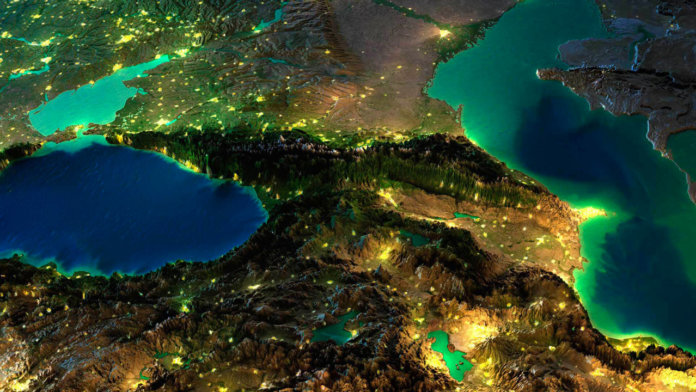If Finland is called "the country of thousands of lakes", then Russia can be called "the country of millions of lakes." Indeed, in our country there are over 2 million lakes, from tiny to those that are comparable in size to a small sea.
There will be a lot of water in this rating, because we will tell you about the largest lake in Russia, as well as about its "younger brothers" from the top ten largest lakes in Russia.
10. White Lake, area - 1,290 km²
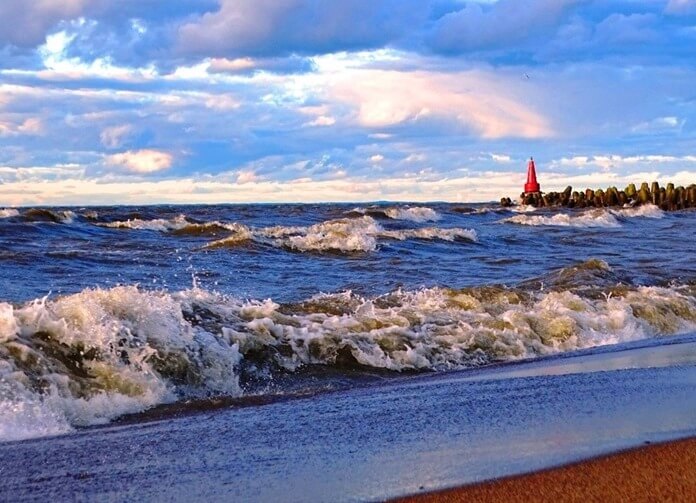 There are many white lakes in Russia, but the largest of them is located in the Vologda region, near Cherepovets. It got its name because of the fine white clay, which in bad weather mixes with lake water and gives it a white color.
There are many white lakes in Russia, but the largest of them is located in the Vologda region, near Cherepovets. It got its name because of the fine white clay, which in bad weather mixes with lake water and gives it a white color.
And intensive shipping also does not contribute to the transparency of the water and is the reason for the strong pollution of the White Lake with oil products. The shores of the lake are densely populated, which only increases the amount of waste and effluent entering the water. Because of this, fish often die en masse in the White Lake.
9. Vats - 1 708-2 269 km²
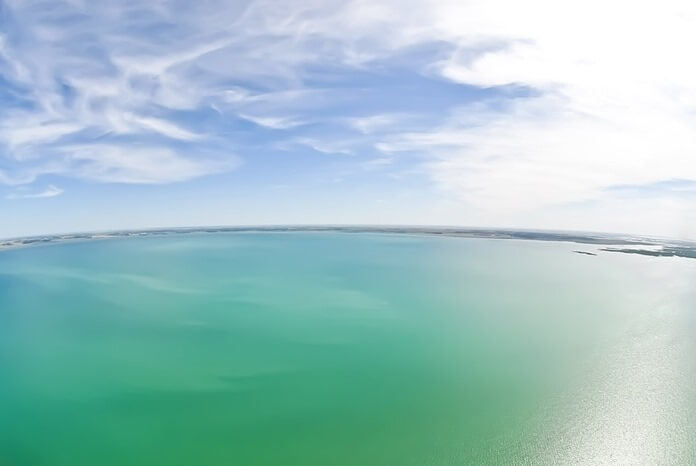 One of the largest lakes in Russia stretches between Omsk and Novosibirsk. If it seemed to you that its name was consonant with the word "chan", then in fact it is. Translated from the Turkic chan - a large vessel. The area of the lake is unstable, and is still not known exactly.
One of the largest lakes in Russia stretches between Omsk and Novosibirsk. If it seemed to you that its name was consonant with the word "chan", then in fact it is. Translated from the Turkic chan - a large vessel. The area of the lake is unstable, and is still not known exactly.
According to local legends, near Lake Chany there is an entrance to Shambhala - a mystical country of spiritual harmony and enlightenment. But local fishermen do not need to look for Shambhala in order to achieve harmony, because they still have rich (albeit depleting from year to year) fish reserves of the lake, including roach, perch, bream, pike, ide, goldfish, carp, etc. zander.
8. Ubsu-Nur - 3 350 km²
 The largest lake in Mongolia, part of the northern coast and water area, touches the territory of the Republic of Tuva, so it can be considered the brainchild of two countries.
The largest lake in Mongolia, part of the northern coast and water area, touches the territory of the Republic of Tuva, so it can be considered the brainchild of two countries.
Ubsu-Nur water tastes bitter-salty, resembles sea water and roughly corresponds to the salinity of the Black Sea water.
Once upon a time, the Xiongnu tribes, Mongols and Yenisei Kyrgyzs roamed along the shores of the lake. They left behind runic inscriptions, burial mounds and petroglyphs. But nowadays, the coast of Ubsu-Nur is practically unpopulated, which has saved the local ecosystem from human impact. The only fish species in Ubsu-Nur that has commercial value is the Altai Osman.
7. Peipsi-Pskov Lake - 3,555 km²
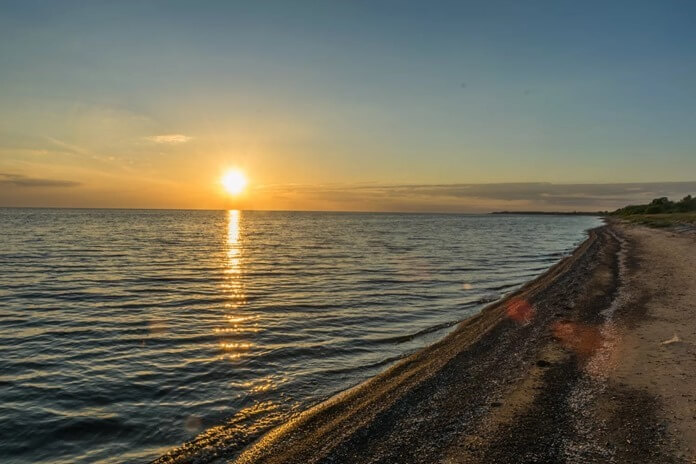 A picturesque place, perfect for relaxing away from the bustling metropolis. It is located on the border between Estonia and the Pskov and Leningrad regions. And part of the name Chudsko-Pskovskoe just came from the ethnonym "Chud", which in Russia was used to designate the ancient Estonians (because of their "wonderful" language).
A picturesque place, perfect for relaxing away from the bustling metropolis. It is located on the border between Estonia and the Pskov and Leningrad regions. And part of the name Chudsko-Pskovskoe just came from the ethnonym "Chud", which in Russia was used to designate the ancient Estonians (because of their "wonderful" language).
Thanks to the beauty of the lake, numerous recreation centers have grown on its shores with enticing names: "Far-away kingdom", "Teremok", "Lukomorye" and "Chudskoye compound". The Estonian side does not lag behind the Russian, and has built on its side recreational establishments with names that are not so sweet for the Russian ear: "Kauksi", "Uuskula" and "Suvi".
6. Khanka - 4,070 km²
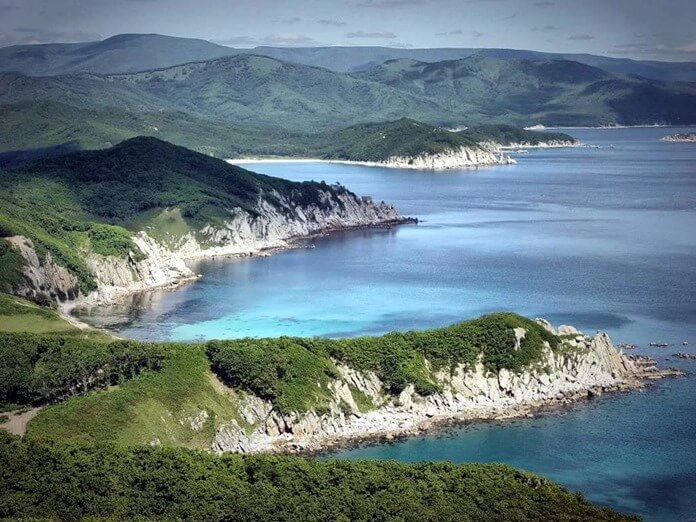 One of the largest lakes in Russia and the largest freshwater reservoir in the Far East generously shares its wealth with both the Russian and Chinese sides. Lake Khanka is very rich in fish, and even in the Middle Ages, Chinese emperors feasted on fish caught in its waters.
One of the largest lakes in Russia and the largest freshwater reservoir in the Far East generously shares its wealth with both the Russian and Chinese sides. Lake Khanka is very rich in fish, and even in the Middle Ages, Chinese emperors feasted on fish caught in its waters.
It was in the vicinity of this lake that Akira Kurosawa filmed his famous film "Dersu Uzala". Hanka is also indirectly present in the anime series Steel Alert, where the state of the same name appears, located within the boundaries of a real lake.
5. Taimyr - 4,560 km²
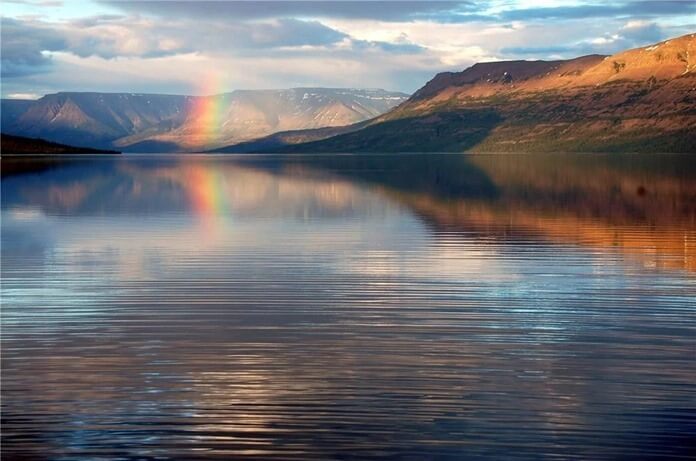 The northernmost lake in the world is located in the permafrost zone. Unsurprisingly, it is covered in ice for most of the year.
The northernmost lake in the world is located in the permafrost zone. Unsurprisingly, it is covered in ice for most of the year.
But harsh conditions are not a hindrance for many lake inhabitants, such as omul, burbot, grayling, char, muksun and whitefish. Red-breasted geese, geese, ducks, peregrine falcons and other migratory birds nest on the Taimyr islands.
This region is also known for the largest population of reindeer in Russia. In addition to them, in Taimyr you can meet wolves, polar foxes and even musk oxen, which were introduced to the region in the 70s of the last century.
4. Lake Onega - 9 720 km²
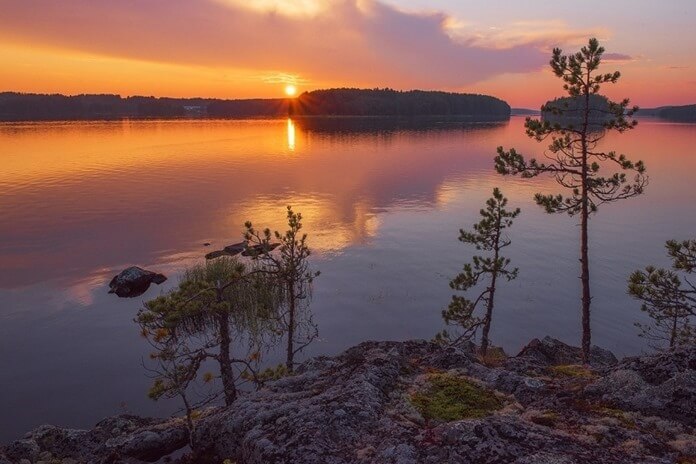 One of the largest freshwater reservoirs in Europe absorbs over 1000 streams, but only one of them - the Svir River - allows it to go outside. And there are even more islands on Lake Onega than watercourses - 1650.
One of the largest freshwater reservoirs in Europe absorbs over 1000 streams, but only one of them - the Svir River - allows it to go outside. And there are even more islands on Lake Onega than watercourses - 1650.
The most famous of them is the Kizhi Island, which contains the best examples of Russian wooden temple architecture. These buildings date back to different centuries (the oldest dating back to the 14th century) and were brought to the island for preservation and public accessibility.
3. Ladoga Lake - 17 870 km²
 This Karelian beauty is a zealous mistress. Following the example of her brother, Lake Onega, she collects many rivers and streams (over 40 of them flow into the lake), and lets out only one river, the Neva, from her embrace. And in the Neva delta is the "Venice of the North" - the majestic St. Petersburg (formerly Leningrad), which is the second largest and most populous city in Russia.
This Karelian beauty is a zealous mistress. Following the example of her brother, Lake Onega, she collects many rivers and streams (over 40 of them flow into the lake), and lets out only one river, the Neva, from her embrace. And in the Neva delta is the "Venice of the North" - the majestic St. Petersburg (formerly Leningrad), which is the second largest and most populous city in Russia.
During World War II, the famous Road of Life ran along Lake Ladoga - the only transport artery connecting Leningrad, besieged by the Germans and Finns, with the rest of the country. For deliveries to the city, trucks in winter drove across a frozen lake, and during periods of navigation, cargo was transported by water. During the existence of the Road of Life (from September 12, 1941 to March 1943), 1 million 615 thousand tons were transported along it and 1 million 376 thousand people were evacuated.
2. Baikal - 31,722 km²
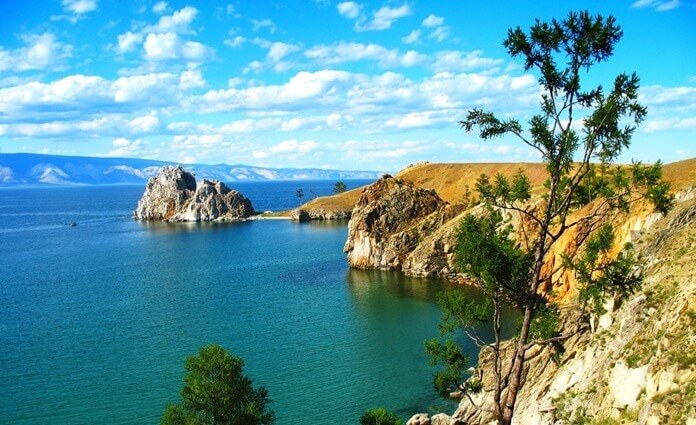 One of the largest lakes in the world so far holds the title of the cleanest lake in Russia. At first, you can experience the shock of swimming to depth and finding that the boat seems to be floating in the air. And if you visit Baikal in winter, you will be greeted by the most transparent ice, the thickness of which reaches 50 centimeters.
One of the largest lakes in the world so far holds the title of the cleanest lake in Russia. At first, you can experience the shock of swimming to depth and finding that the boat seems to be floating in the air. And if you visit Baikal in winter, you will be greeted by the most transparent ice, the thickness of which reaches 50 centimeters.
Some European states, such as Malta (316 km²), Montenegro (13,812 km²) and Albania (28,748 km²), can be located on the territory of Lake Baikal.
1. Caspian Sea - 371,000 km²
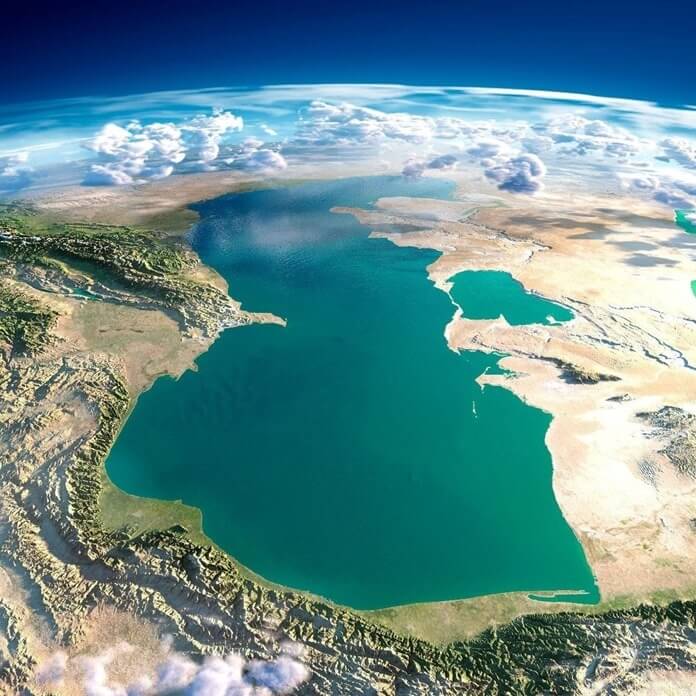 The list of the largest lakes in Russia is crowned with the largest closed body of water on Earth. The ancient Romans called it the sea because of the brackish water. In fact, the salinity of the Caspian water is 1.2%, which is about 1/3 of the salinity of most sea waters.
The list of the largest lakes in Russia is crowned with the largest closed body of water on Earth. The ancient Romans called it the sea because of the brackish water. In fact, the salinity of the Caspian water is 1.2%, which is about 1/3 of the salinity of most sea waters.
And the word "Caspian" appeared in the name in honor of the Caspian tribes who lived on the southwestern coast of the sea in the first millennium BC. e. However, different peoples gave the Caspian their name, and there were as many as 70 of them near the sea-lake.
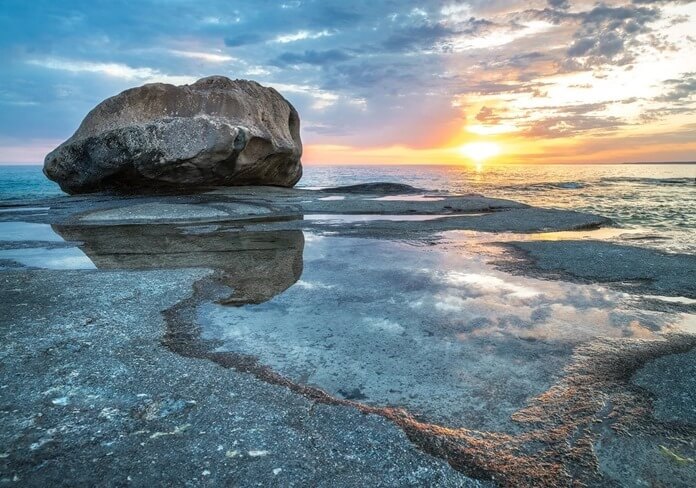 Like the Aral, Azov and Black Seas, the Caspian is a relic of the ancient Sarmatian Sea, along the shores of which elephants, rhinos, giraffes and mastodons once roamed. It lost its access to the sea about 5.5 million years ago due to tectonic rise and fall of sea level.
Like the Aral, Azov and Black Seas, the Caspian is a relic of the ancient Sarmatian Sea, along the shores of which elephants, rhinos, giraffes and mastodons once roamed. It lost its access to the sea about 5.5 million years ago due to tectonic rise and fall of sea level.
There are about 850 animal species, over 500 plant species and 115 fish species in the Caspian. Some of the most valuable commercial fish species inhabiting the Caspian are sturgeon, Caspian bream and Caspian salmon.
Several species of animals are named after the region, such as the Caspian gull, the Caspian tern, and the Caspian seal, which is endemic to the lake.
List of largest lakes in Russia
| # | Lake | Area, km² | Depth, m | Height above sea level, m |
|---|---|---|---|---|
| 1 | Caspian Sea | 371000 | 1025 | −28 |
| 2 | Baikal | 31500 | 1637 | 456 |
| 3 | Ladoga lake | 17703 | 225 | 4 |
| 4 | Onega lake | 9616 | 124 | 32 |
| 5 | Taimyr | 4560 | 26 | 6 |
| 6 | Hanka | 4190 | 10 | 68 |
| 7 | Chudsko-Pskov lake | 3555 | 15 | 30 |
| 8 | Ubsu-Nur | 3350 | 15 | 753 |
| 9 | Vats | 1990 | 12 | 105 |
| 10 | White lake | 1290 | 20 | 113 |
| 11 | Topozero | 986 | 56 | 110 |
| 12 | Ilmen | 982 | 10 | 18 |
| 13 | Khantai lake | 822 | 420 | 65 |
| 14 | Segozero | 815 | 103 | 120 |
| 15 | Imandra | 812 | 67 | 128 |
| 16 | Pyasino | 735 | 10 | 28 |
| 17 | Kulundinskoe lake | 728 | 4 | 98 |
| 18 | Pyaozero | 659 | 49 | 110 |
| 19 | Vygozero | 560 | 24 | 89 |
| 20 | Nerpichye Lake | 552 | 12 | 0.4 |
| 21 | Labaz | 470 | n / a | 47 |
| 22 | Red lake | 458 | 4 | 0 |
| 23 | Chum | 452 | 180 | 93 |
| 24 | Ubinskoe lake | 440 | 4 | 134 |
| 25 | Pekulneyskoe lake | 435 | n / a | 0.7 |
| 26 | Umbozero | 422 | 115 | 149 |
| 27 | Vozhe | 416 | 4 | 120 |
| 28 | Kubenskoe lake | 407 | 13 | 109 |
| 29 | Chukchagir lake | 366 | 6 | 70 |
| 30 | Tailor | 360 | n / a | 62 |
| 31 | Manych-Gudilo | 344 | 1 | 10 |
| 32 | Bologne | 338 | 4 | 19 |
| 33 | Lacha | 334 | 6 | 118 |
| 34 | Udyl | 330 | 5 | 12 |
| 35 | Mogotievo lake | 323 | n / a | 0 |
| 36 | Vodlozero | 322 | 4 | 136 |
| 37 | Llama | 318 | > 300 | n / a |
| 38 | Orel | 314 | 4 | n / a |
| 39 | Kesey | 280 | 4 | n / a |
| 40 | Small | 270 | 22 | n / a |
| 41 | Kungasalah | 270 | n / a | 76 |
| 42 | Syamozero | 266 | 24 | n / a |
| 43 | Middle Kuito | 257 | n / a | 101 |
| 44 | Pyhäjärvi | 255 | 32 | 80 |
| 45 | Bustakh | 249 | n / a | n / a |
| 46 | Yarroto 1st | 247 | 8 | n / a |
| 47 | Kronotskoe lake | 242 | 148 | 372 |
| 48 | Sartlan | 238 | 6 | n / a |
| 49 | Essey | 238 | n / a | 266 |
| 50 | Nerpichye Lake | 237 | n / a | n / a |
| 51 | Vivi | 229 | n / a | n / a |
| 52 | Kovdozero | 224 | 63 | 37 |
| 53 | Keret | 223 | 5 | 91 |
| 54 | Teletskoye lake | 223 | 325 | 434 |
| 55 | Seliger | 222 | 24 | 205 |
| 56 | Nuke | 214 | 40 | 134 |
| 57 | Lovozero | 209 | 35 | n / a |
| 58 | Mainychin-Hankavatan | 205 | n / a | n / a |
| 59 | Janisjärvi | 175 | 51 | 64 |

